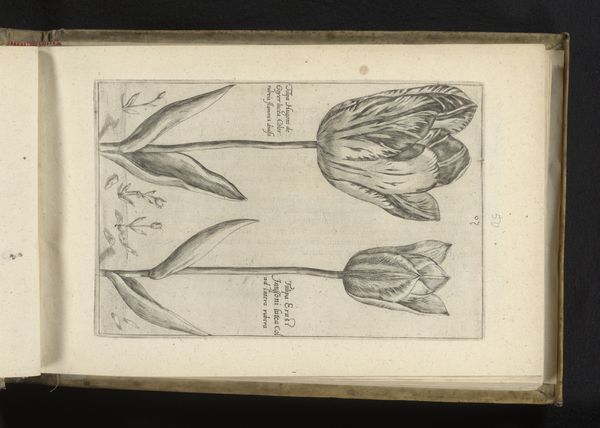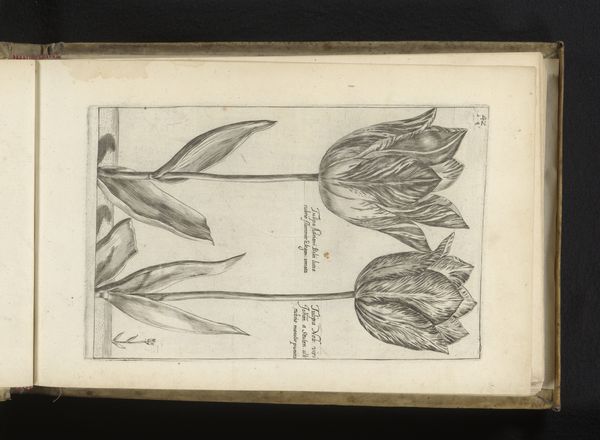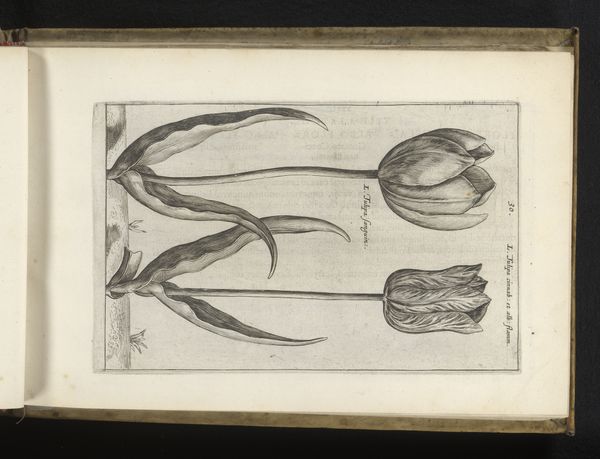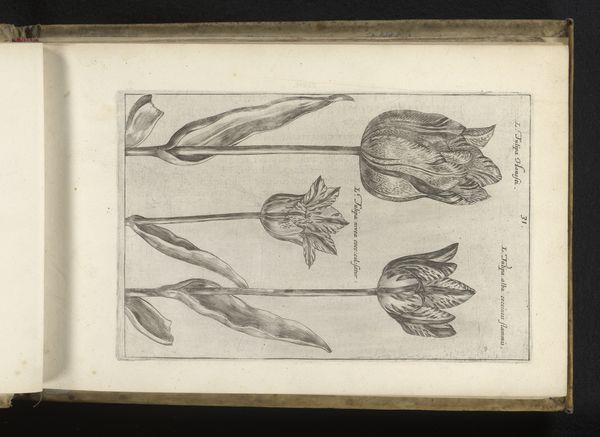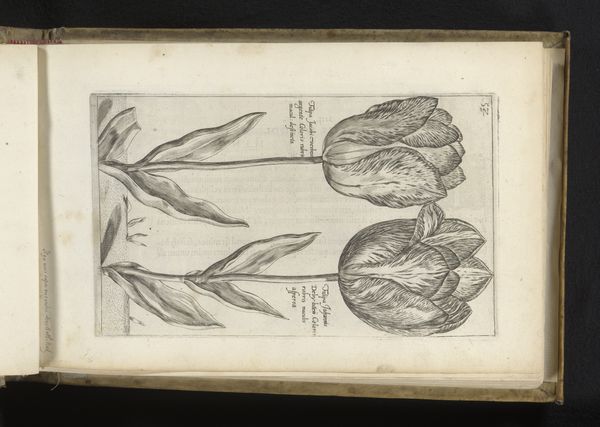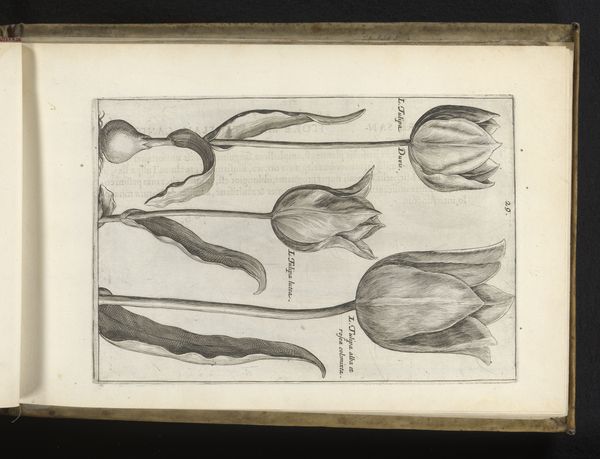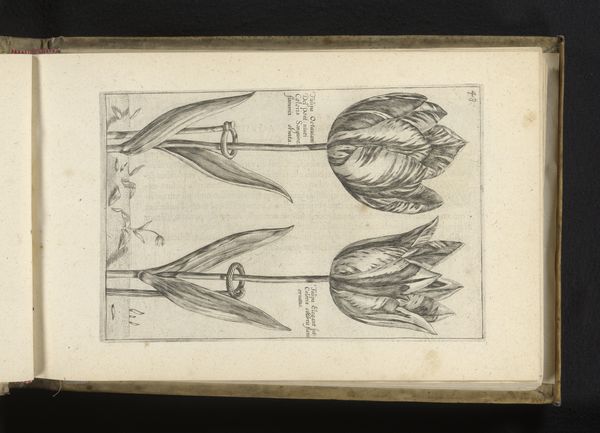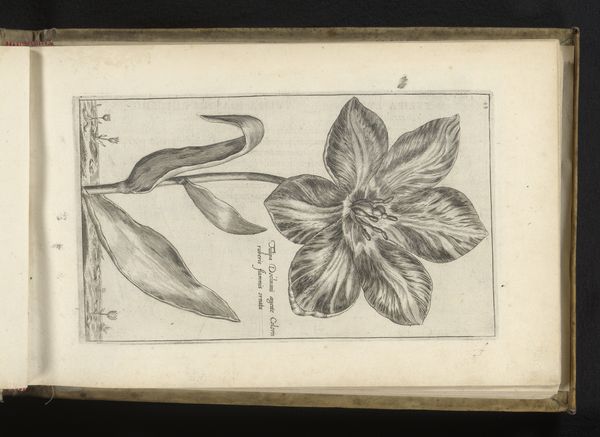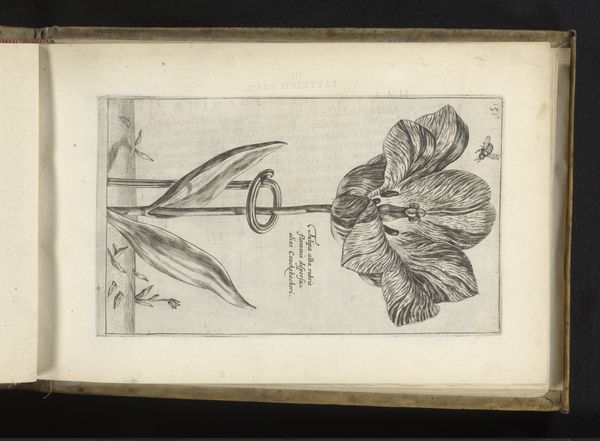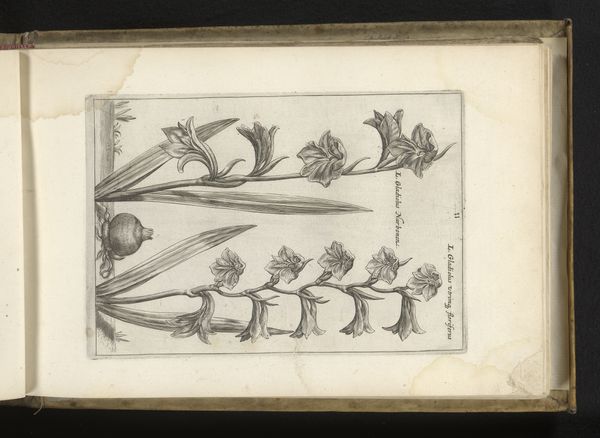
drawing, print, engraving
#
drawing
# print
#
flower
#
figuration
#
line
#
northern-renaissance
#
engraving
Dimensions: height 214 mm, width 147 mm
Copyright: Rijks Museum: Open Domain
This print of two multicolored tulips was created by Crispijn van de Passe the Younger, likely in the early 17th century. The image was made through engraving, a meticulous intaglio process. The artist would have used a tool called a burin to incise lines directly into a copper plate. Ink is then forced into these grooves, and the plate is pressed onto paper, leaving a precise, delicate image. Engraving was a prized skill, particularly suited to botanical illustration, which demanded accuracy. But in the context of the Dutch Golden Age, tulips were more than just pretty flowers. They were a commodity, subject to wild speculation. The engraver's skill was thus enlisted in the service of trade, reproducing images that fuelled the infamous "tulip mania." Look closely at the detail, the precision of the lines. This wasn't just art; it was a form of branding, a way of capturing and circulating value in a frenzied market. The print, like the tulip itself, became a potent symbol of both beauty and the burgeoning capitalist system.
Comments
No comments
Be the first to comment and join the conversation on the ultimate creative platform.
